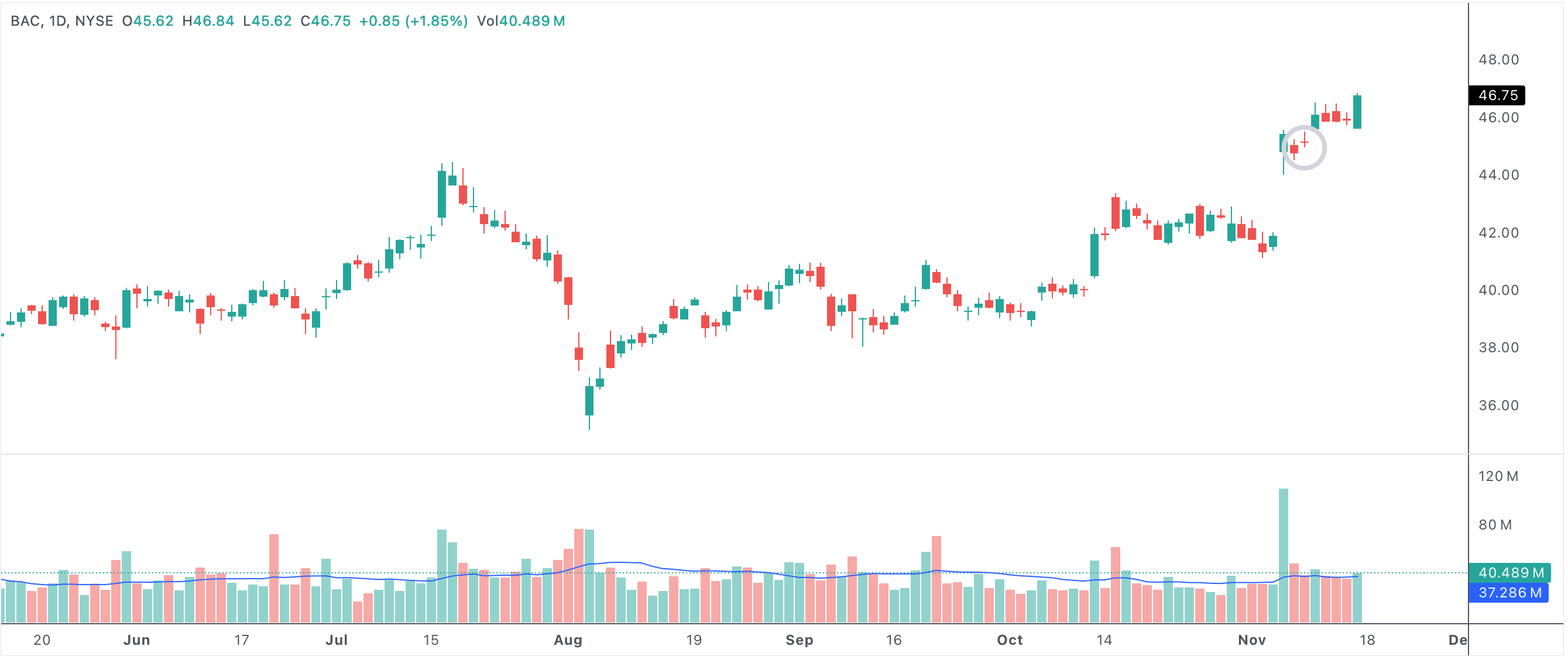Red day followed by a bullish breakout 2-up with breakout bar still red
In technical analysis, the pattern of a red day followed by a bullish breakout 2-up with the bar itself red stands out as a nuanced signal of changing momentum. This scenario involves a period of selling (the red day) immediately succeeded by a breakout above a previous high, even as the breakout candle remains red—meaning the close is below the open, despite setting a new high for the move. For savvy traders and investors, this uncommon two-bar combination can provide an early clue that the market is shaking off prior weakness and setting up for a potential trend reversal or acceleration upward.

redredbull
An example of a red day followed by a bullish breakout 2-up with the bar itself red
Red day followed by a bullish breakout 2-up with the bar itself red
Understanding the Pattern
The first element—a red day—reflects selling pressure or market hesitation, pushing prices lower on the session. The next session, however, delivers a 2-up bullish breakout, meaning the high of the day exceeds the previous high. Uniquely, the breakout bar also closes red, suggesting that, although buyers pushed price higher intraday, sellers brought it back down toward the close. This apparent contradiction can actually reveal significant market information, as the attempt to push lower has been met by enough buying to break out above resistance.
Why the Breakout Bar Still Being Red Matters
In most bullish breakouts, traders expect to see a strong green bar. However, a breakout bar that remains red hints at ongoing skirmishes between buyers and sellers. Despite closing below its open, the new high achieved is a bullish signal. The presence of this red breakout bar may temporarily discourage weak hands but often attracts sophisticated traders who recognize that the new high signals renewed buying interest and the potential for further gains. In essence, the breakout overpowers short-term selling pressure and can foreshadow a more sustained advance.
Volume and Confirmation
As with any breakout pattern, volume analysis is crucial. Elevated trading volume on the breakout day adds weight to the move, confirming that institutional buyers or a surge in retail participation is driving the shift. When a red breakout bar appears on high volume, it may indicate that sellers are losing control, even if they momentarily push prices lower by the close. If volume is light, however, the move is less convincing and should be monitored closely for follow-through.
- Initial red day signals selling pressure or market caution.
- Bullish breakout 2-up demonstrates renewed buying, setting a higher high.
- The breakout bar closing red reveals ongoing tug-of-war but does not invalidate the upward breakout.
- Increased volume on the breakout day is a key confirmation for trend reversal or continuation.
- Proximity to support levels further increases the reliability of the bullish signal.
Trading Implications and Strategy
Traders spotting this setup may look for confirmation on the next session. A green close or a higher low can provide additional confidence that buyers are gaining the upper hand. Some traders enter on the close of the breakout bar, while others wait for additional bullish confirmation. Stop-losses are often placed just below the breakout day’s low to manage risk, as failure to hold above resistance can invalidate the signal.
Investors may also monitor for positive shifts in broader market sentiment or related technical indicators—such as RSI moving out of oversold territory or MACD turning bullish—to reinforce the breakout’s credibility. This pattern, particularly when occurring after a prolonged downtrend or near a major support area, can be the first sign of a durable reversal.
Summary: A Contrarian Bullish Signal
The red day followed by a bullish breakout 2-up with the bar itself red pattern serves as an intriguing blend of caution and optimism. It underscores the importance of context: when buyers assert control despite apparent weakness, it may foreshadow renewed upward momentum. Traders and investors who recognize and act on this pattern, especially with volume confirmation, can potentially catch the early stages of a significant move higher.